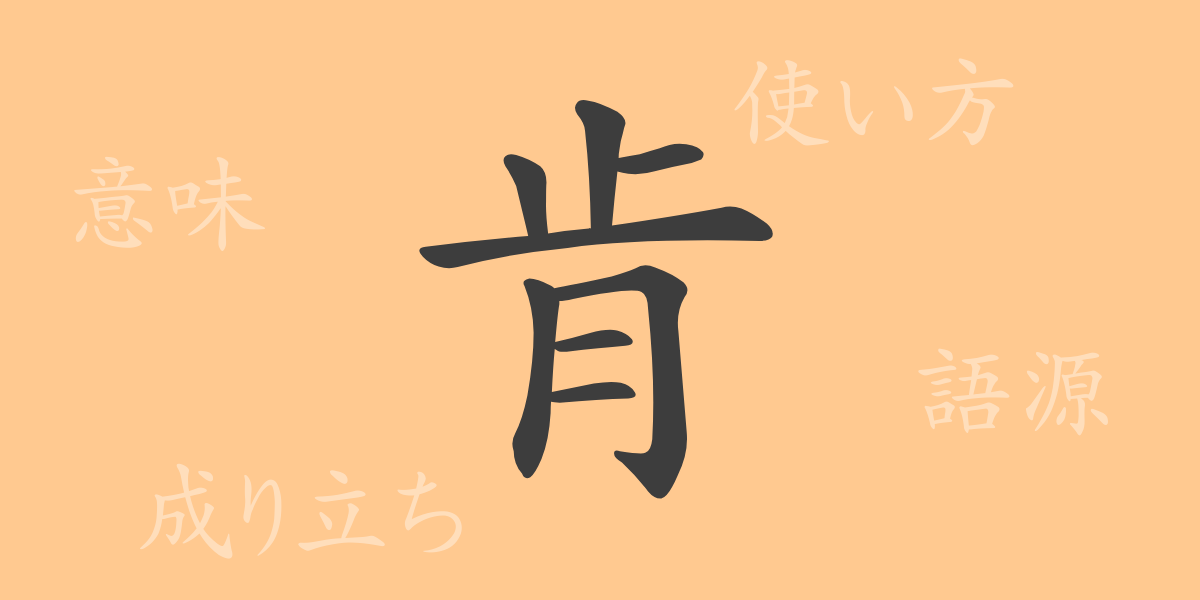The richness of the Japanese language is reflected in its characters. Each kanji has a history and a unique story. The common kanji “肯(こう)” is no exception. Frequently seen in daily life, what is its origin, and what meanings does it hold? In this article, we will delve into the origins, meanings, and usage of “肯(こう),” as well as its readings and stroke count. Additionally, we will explore idioms and proverbs that use “肯(こう),” fully conveying the charm of this kanji.
Origins of 肯(こう)
The kanji “肯(こう)” can trace its origins back to ancient Chinese oracle bone script. Initially, it was a pictograph representing the act of nodding, symbolizing “agreement” or “consent.” Over time, it evolved through various forms to its current shape. Historically, it was used to express affirmation or agreement, a usage that continues to this day.
Meanings and Usage of 肯(こう)
The kanji “肯(こう)” primarily means “to nod,” “to agree,” or “to affirm.” In some contexts, it can also mean “easily” or “readily.” For example, it appears in phrases like “肯定的な返答” (positive response) or “肯くことなく進む” (proceed without hesitation). It can also be used in the negative form as “肯んじない” (to refuse or to not agree).
Readings, Stroke Count, and Radical of 肯(こう)
The kanji “肯(こう)” is not only rich in meaning but also has unique readings and structural characteristics.
- Readings: The on-yomi (Chinese reading) is “コウ(こう),” and there is no kun-yomi (Japanese reading).
- Stroke Count: It consists of 10 strokes in total.
- Radical: The radical is 肉(にくづき), which means “meat.”
Idioms, Phrases, and Proverbs Using 肯(こう)
Idioms and proverbs containing “肯(こう)” are used to enrich expressions or to suit specific situations. For example, “肯定的(こうていてき)” means “positive” or “affirmative,” often used in contrast to “否定的(ひていてき)” (negative). “首肯(しゅこう)” means “to nod,” indicating agreement or approval. These expressions frequently appear in business contexts and daily conversations, facilitating smooth communication.
Conclusion on 肯(こう)
This article has explored the origins, meanings, and usage of the kanji “肯(こう).” We also covered its readings, stroke count, and radical, along with idioms and proverbs that use “肯(こう).” This kanji, which offers a glimpse into the richness of the Japanese language, plays an important role in our words due to its simple yet profound meaning. The next time you encounter this kanji, take a moment to appreciate its background and enjoy using it in your communication.

























